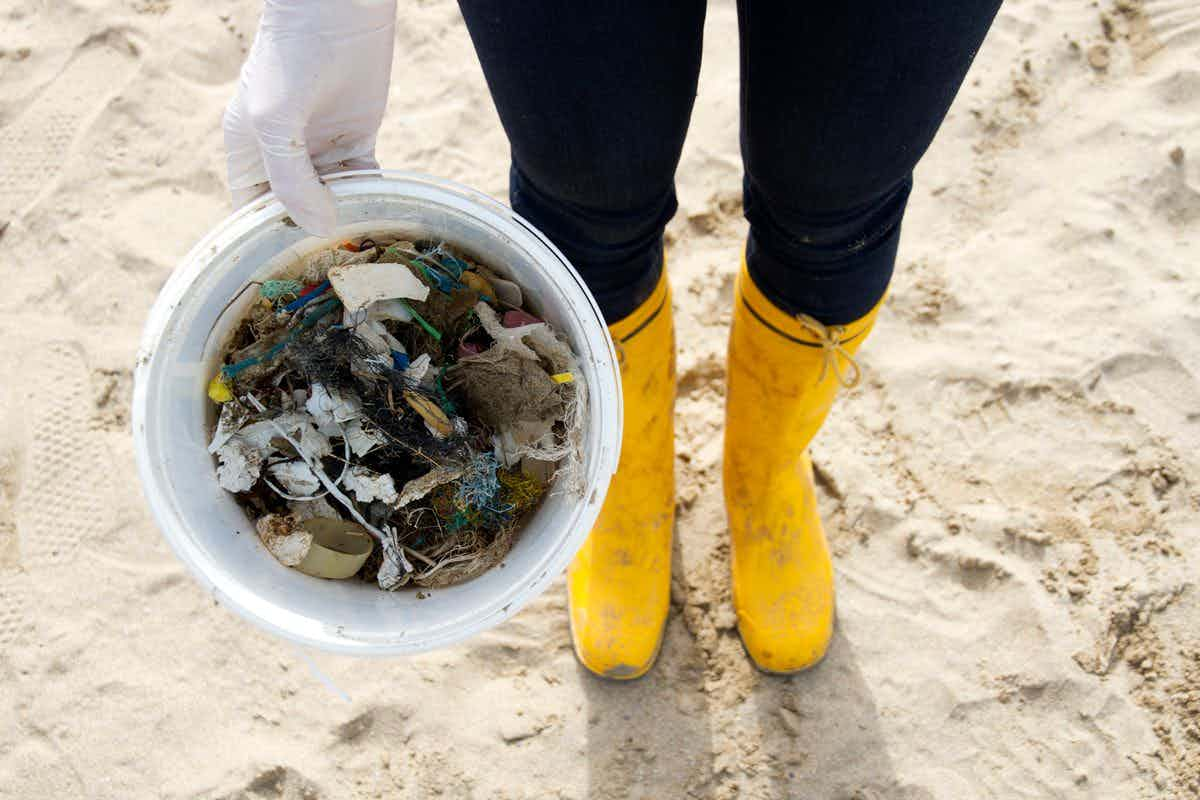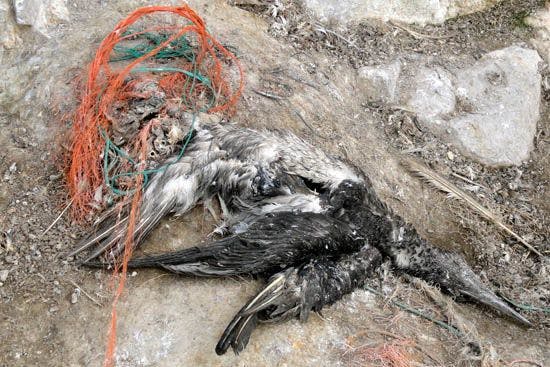NatureSurfing Has A Plastic Elephant In The Room

Words and Images by Mat Arney
As the northern hemisphere moves further into winter and the southern half prepares itself for the joys of high summer, the one thing that doesn’t change with the weather is the issue of marine plastic pollution in our oceans. It’s an inescapable problem; one that coastal councils in developed countries often try to rake up every morning during the summer holidays to hide from the tourists, but that is all too apparent when the first storms of winter wash a wave of plastic trash back onto the sand.

It’s estimated that in the UK alone there are approximately 2000 pieces of marine litter for every kilometer of beach, and around 60% of that litter is plastic. That is a huge amount – just try taking a step along the high tide line of any beach and you’ll be sure to find something that’s not meant to be there, particularly on a windward coast. At any point along the strand line you’ll be able to bend down, peer into the tangle of seaweed left by the receding tide and find a piece of plastic: an incriminating fingerprint of mankind’s disregard for the natural environment.
The two repeat offenders on the list of items picked up from beaches are plastic pieces (aka nurdles or “mermaids tears”) and fishing flotsam and jetsam such as line and nets. The impacts of fishing nets and monofilament line, alongside plastic packaging straps, are well illustrated by the Gannets of Grassholm Island, just off the coast of Wales, UK. Each year 40,000 nesting pairs arrive on the island to build or repair their nests, and often the nest-building males collect plastic litter from the oceans in preference to seaweed because it floats and is highly visible, then return to Grassholm to weave it into their nests. Juvenile gannet chicks often become entangled in this synthetic material and as they grow become trapped and tethered to their nests. When the colony returns to sea in autumn the trapped juveniles are left behind and slowly starve unless released by the small team of RSPB volunteers who visit the island each year to cut them free. Grim. On Midway Atoll in the Pacific Ocean, miles from anywhere, seabird corpses decompose revealing just a skeleton and a small pile of the plastic that they’ve eaten occupying the space where their stomachs were.

The body of a juvenile gannet, still tangled in the plastic fishing net woven into it’s nest on Grassholm Island. Image by Lisa Morgan/RSPB
But it’s not just seabirds. Plastic bags bob around the oceans looking remarkably like jellyfish to the large marine animals that feed on them. Postmortem examinations carried out on dead cetaceans and turtles frequently reveal guts full of plastic bags, which do not pass through them or decompose and instead accumulate and starve the animals. The fate of turtles who eat plastic bags and then float to the surface because of the increased buoyancy and bake to death in the sun is particularly gross.
In 1997, nearly five million bits of Lego fell into the sea when a huge wave hit the container ship Tokio Express, washing 62 containers overboard.

Tiny little pieces of plastic, often called “nurdles” or “mermaids tears”, come from a variety of sources. Many are the small pellets used in the primary production of injection moulded plastic products such as buckets, bins and things like that. You know when plastic products have that little circular blob somewhere on the bottom with a kind of stringy bit of plastic hanging off it? That’s a product that’s been injection moulded, a process where tiny plastic pellets are heated up and squirted into a mould. Other tiny plastic particles come from things like face-scrubs and exfoliators. Yup, many of those tiny beads that you rub into your face to clean it are actually plastic, and they go down your plughole and end up, eventually, in the sea and on the beaches.

So what’s the problem with such tiny pieces of plastic? Out of sight, out of mind no? Definitely not. Plastic acts like a sponge to chemicals and toxins, absorbing them and carrying them around. Fish, shellfish and seabirds ingest the plastic and it often fails to pass through their digestive systems, so they accumulate plastic and the toxins that they carry. We eat said fish and shellfish, and the process of bioaccumulation stops with us, the apex predator. Of 504 fish examined in a recent study undertaken by a team from the University of Plymouth and the UK Marine Biological Association, more than a third were found to contain pieces of plastic less than one millimetre in size.
https://www.youtube.com/watch?v=c7MtuG2I_f0#t=24
So that’s all pretty depressing. How do we, little old “us”, make a difference? Here’s a few ideas of how you can think global, act local and be a small cog in a bigger engine for change:
- If you take a step along the beach and do indeed find pieces of litter that aren’t meant to be there, then perhaps it’s time to take steps against marine plastic pollution: Pick Up 3, do a #2minutebeachclean or join a regular beach clean event.
- Refuse plastic bags. If you visit the supermarket then take your own bags, buy a bag for life or if you’re in the USA use a paper bag and recycle it. If you have your groceries delivered then click the option for delivery without bags so your shopping arrives in crates that the driver takes back to the store.
- Carry A Cup. Keep a cup or small flask in your bag or car to take into coffee shops rather than getting take-out cups. Those plastic lids are particularly evil.
- Drink from the tap. In many countries tap water is totally safe so if possible drink from the tap or refill bottles rather than buying expensive and pointless bottled water.
- Try to buy grocery items that aren’t overly packaged (loose fruit and vegetables immediately spring to mind). If enough people refuse to buy based on excessive packaging then the supermarkets will stop using it. It’d save them money too after all. If you’re funny about the possibility of other humans touching your food at some point then wash it or peel it when you get home – many fruit and vegetables come with their own natural packaging called skin which is fully biodegradable.
If we all do a little then hopefully, over time, we can achieve a lot. For more information, have a click around the following links:
- Surfers Against Sewage
- The Surfrider Foundation
- 5 Gyres
- The Plastic Pollution Coalition
- The Plastic Project by Surf Photographer Tim Nunn